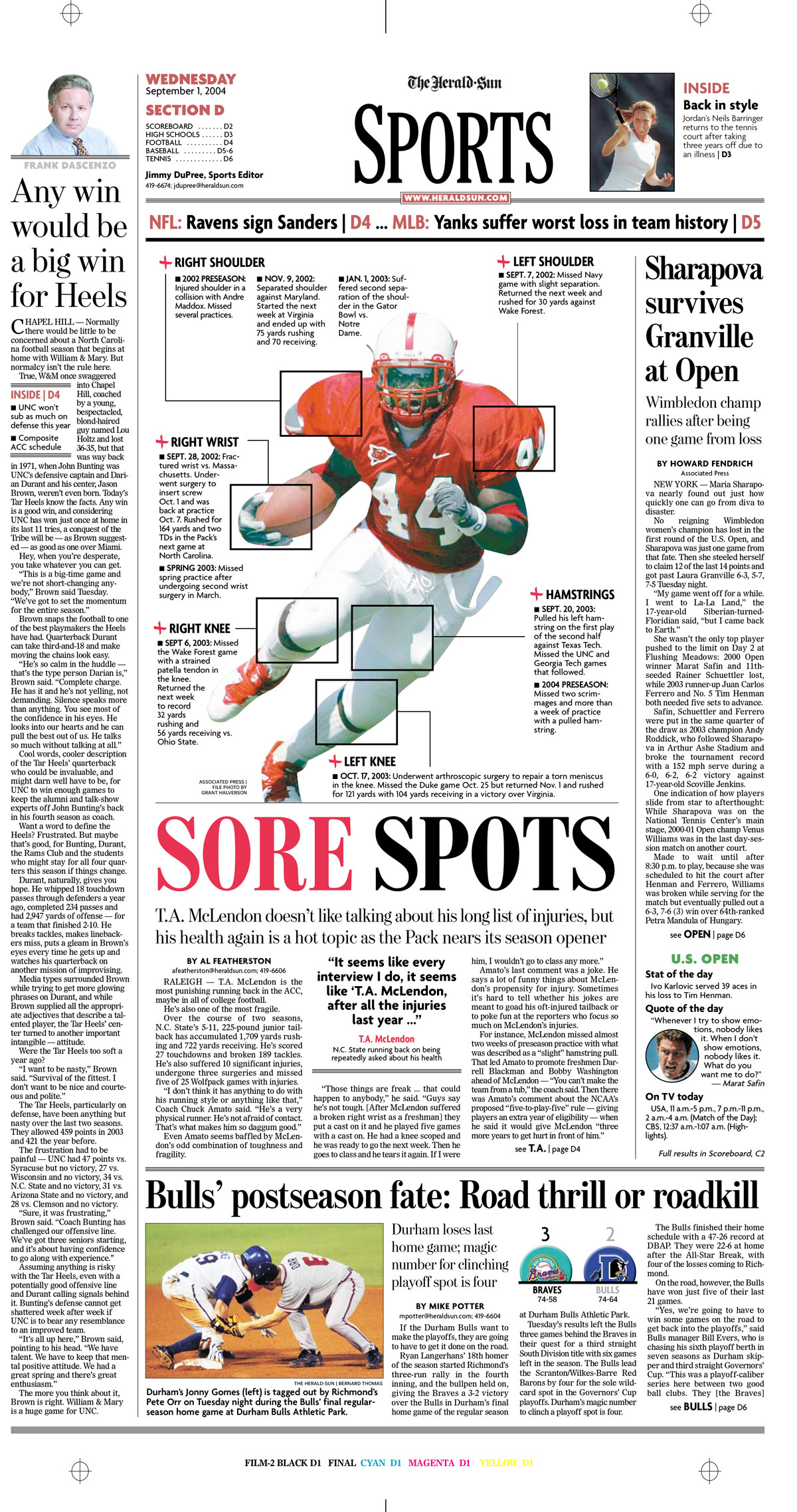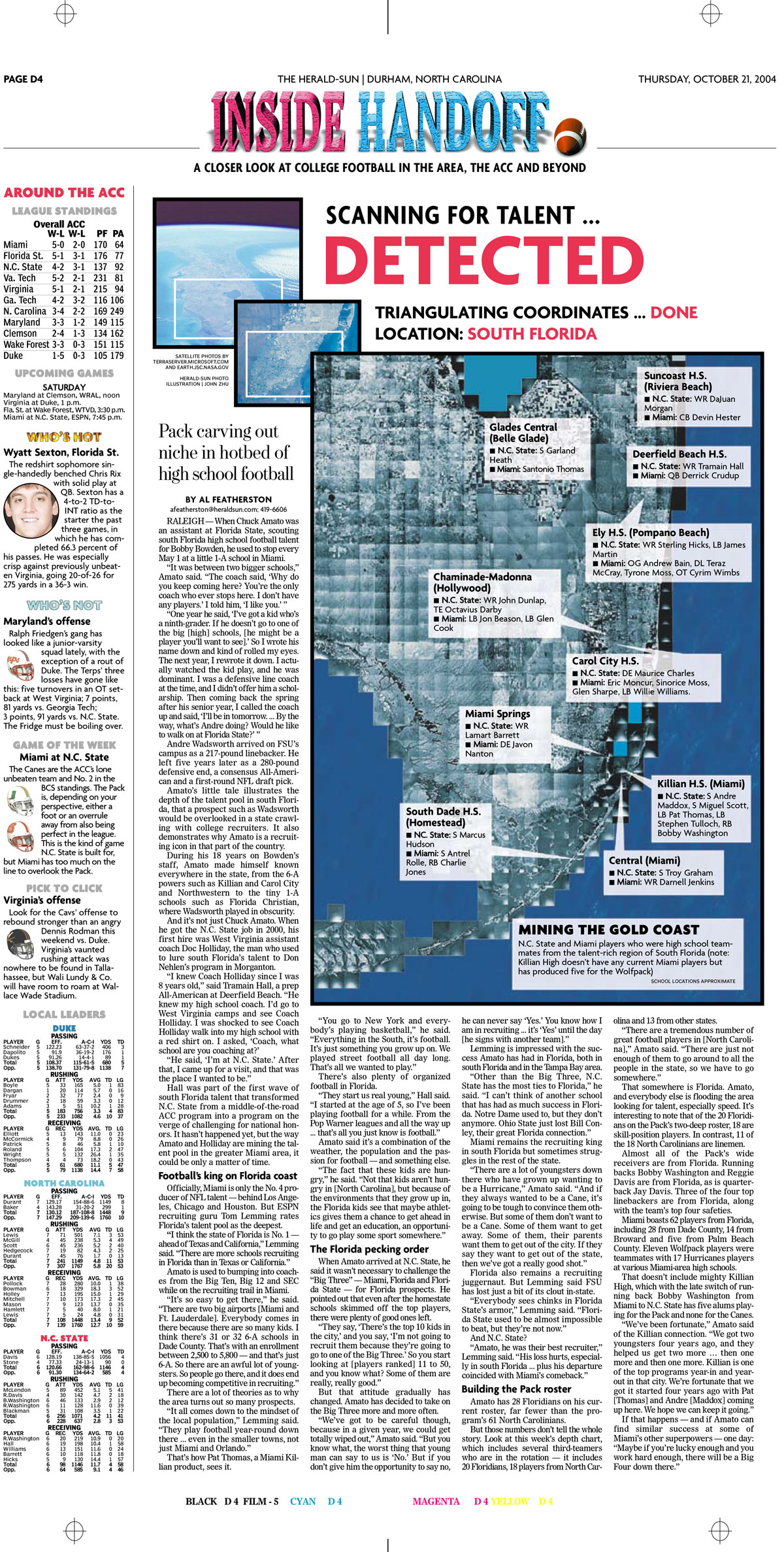content strategy
Revamping Sports Coverage
When I was a designer and copy editor in the sports department of The Herald-Sun, we faced a consistent problem of an inconsistent flow of content from one day to the next during the college football season.
We covered four local college football programs, and they all held press conferences on multiple days of the week. At these press conferences, the schools would bring out a couple players for reporters to interview, and those interviews often formed the basis for same-day feature stories. The problem was that we never knew which players would be brought out until the press conference actually took place. That meant our reporters were filing non-time-sensitive feature stories on deadline. The design desk then had to scramble to find photos or other visuals to accompany those stories (which we often did not have). Also, because we covered four schools, it was not uncommon for multiple reporters to file lengthy feature stories on the same day, creating a logjam of content and not enough space in the print edition to give all the stories their due.
After observing this problem, I took the initiative to engage various stakeholders (reporters, designers, editors) to develop a solution, gain buy-in, and successfully implemented it.
To address the problem, we gave each of our four schools its designated day in the spotlight each week. On a school's designated day, the reporter covering that school would produce a feature story, while the reporters covering the other three schools would just write shorter roundups of news and notes. The press conferences were still a source of information for our daily coverage, but they no longer dictated that coverage.
This change resulted in a better workflow and better content. The design desk knew going into each day the approximate amount of content it was going to get for each school. Our reporters began to plan more of their feature stories ahead of time, rather than just writing about whichever players the schools brought out that day. This led to better, more in-depth stories (and stories that our competitors did not have on those days because we weren't writing about the same players as everyone else at the press conferences). It also helped to ensure better art to accompany those stories. We were able to plan ahead and either assign photographers to take portraits of the featured players or develop appropriate graphics and illustrations in advance.



